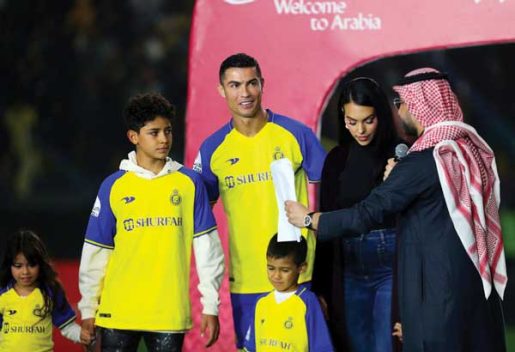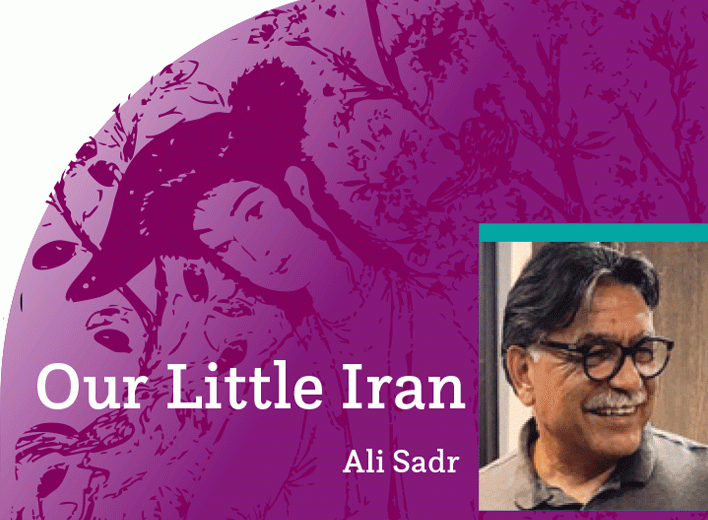Destination Saudi Arabia: A Spectacular Soccer Exodus Unfolds
By Danial Golforoush
A country’s standing at the 54th spot in the FIFA World Ranking doesn’t typically make it a prime destination for attracting well-known and top-tier players to its domestic football league. Over the years, there has been a noticeable correlation between a country’s national team ranking and the competitiveness of its domestic league, with European countries often taking the lead. However, the Saudi Arabian National League has shattered these preconceptions and made significant waves in recent months by successfully luring some of the biggest names in football, including Cristiano Ronaldo, Karim Benzema, N’Golo Kanté, Kalidou Koulibaly, and numerous others. This sudden influx of star power has injected a newfound sense of excitement and prestige into the league, capturing the attention of football fans worldwide.
Saudi Arabia’s Public Investment Fund
The catalyst behind this transformative change was the Saudi Arabia Public Investment Fund—a sovereign wealth fund in which investments are made on behalf of the government, often to peddle influence in various sectors—which strategically acquired a substantial 75% stake in four top-flight teams in the league earlier this year. Leading the way in this eye-catching player exodus is the iconic Cristiano Ronaldo, who reportedly secured a staggering deal worth $200 million per season. This groundbreaking initiative by the Saudi Arabian teams is a clear indication of their intent to compensate for the current lack of quality and attractiveness in their league. To lure these high-profile players, some are being offered wages that promise generational wealth, often exceeding what they earned at their European clubs. Consequently, several players have chosen to leave their European professional careers prematurely to embark on this ambitious venture in Saudi Arabia.

Similar Previous International Acquisitions: China, the U.S., and Others
While overpaying players to bolster a league’s status is not an entirely novel concept, it gained significant attention when the Chinese Football League made similar moves back in 2016. Chinese clubs splurged on European and South American talents, with players like Oscar and Hulk leading the way. While these deals initially raised eyebrows, some teams were more than willing to sell their players to the Chinese market for multiples of their worth. The Chinese government’s involvement, funneled through private funds, aimed to enhance the country’s national and continental football performance. The rationale was that by bringing in players of the highest caliber, domestic players would benefit from their experience, presence, leadership, and tactical insights. However, the reality was somewhat different, as some players treated the Chinese league as a cushy retirement destination, leading to underwhelming performances on the pitch.
One notable example was the Argentine football sensation Carlos Tevez, who became the world’s highest-paid player when he joined Shanghai Shenhua for a reported $41 million. Despite the lucrative deal, Tevez struggled with fitness and weight issues during his time in China. Upon returning to Boca Juniors from his Chinese stint, he candidly referred to his time there as a “holiday” during the two years he spent in the Chinese Super League. With a disappointing record of only four goals in 18 matches across two seasons, Tevez’s time in China cost his team over $10 million for each goal he scored. In response to such experiences, the Chinese Super League implemented significant restrictions on foreign player purchases and shifted its focus to improving domestic talent development and infrastructure.
Similar strategies have been attempted by other football leagues around the world. In the MLS, the approach has been more collective due to wage cap restrictions, with clubs coming together to entice international stars. Additionally, countries like Korea and Qatar have also invested in football legends like Iniesta and Xavi during the early stages of their careers. 
The Fund’s Influence
Nevertheless, the current exodus of players to Saudi Arabia represents an unparalleled phenomenon in the global football landscape. While players like Ronaldo, Benzema, and Kanté are approaching the latter stages of their illustrious careers, there is a remarkable influx of players in their prime who have been consistent performers for their respective national teams. For instance, Rúben Neves from Wolves (English Premier League) and Sergej Milinković-Savić from Lazio (Italy’s Serie A) were heavily linked to major European clubs like Barcelona, Manchester United, and Liverpool (English Premier League) before opting to join Al-Ahli in Saudi Arabia, forming one of the world’s best midfield duos.
Beyond the domestic league, Saudi Arabia has been making significant waves in the greater footballing world. The country’s investments in the English Premier League team Newcastle and LIV Golf have grabbed headlines and generated considerable attention. Although the takeover of Newcastle United was met with controversy and media scrutiny, the team’s subsequent success, which saw them securing a spot in the European Champions League since the 2003–2004 season, underscores the Saudi Public Investment Fund’s unwavering commitment to transforming the domestic league into a breeding ground for football’s future stars. Moreover, other teams outside the initial four clubs—Al-Nassr, Al-Ittihad, Al-Hilal, and Al-Ahli—have also joined the conversation, signaling a broader shift in the league’s appeal to attract established European players. For example, Al-Ettifaq has embraced a Liverpool-inspired approach by securing Steven Gerrard as their coach and Fabinho and Henderson as their formidable midfield duo.
The Saudi Arabian Football Association’s (FA) intentions and vision are crystal clear, with a comprehensive roadmap to elevate the nation’s footballing standards. The FA is focused on strengthening domestic infrastructure for youth development, establishing robust club operations and management frameworks, and creating a cutting-edge Player Acquisition Center of Excellence (PACE Program) for international players. The commercial aspects of their plan are equally ambitious, as evidenced by the remarkable 150% surge in attendance during Ronaldo’s inaugural year and the government-led project’s audacious goal of elevating the Saudi Pro League’s market value from its current $800 million to a remarkable $2.1 billion by the year 2030. Furthermore, the recent Nike sponsorship deal with Ronaldo’s Al-Nassr is a testament to the league’s growing prominence and commercial appeal.
A Broader Effort: Elevation of Asian Soccer
In addition to the league’s growth, the influx of star players, and the improvement of Saudi Arabia’s image on the global stage, there is another significant implication—elevating the importance of Asian continental football. As the Saudi Pro League attracts more viewership and garners global attention, the entire Asian continent stands to benefit, with the region’s footballing reputation receiving a considerable boost.
Looking ahead, Saudi Arabia is gearing up to host the AFC Asian Cup in 2027, demonstrating their commitment to advancing football on the continent. Moreover, there are rumors of Saudi Arabia’s interest in co-hosting the World Cup following the 2026 edition, with potential partners such as Morocco, Egypt, and Italy being linked to these discussions. While nothing is set in stone yet, the prospect of co-hosting with a neighboring nation underscores Saudi Arabia’s determination to remain a prominent figure in international football.
The emergence of the Saudi Arabian National League as a global footballing destination is a testament to the transformative power of strategic investment and ambitious vision. By enticing top-tier players from around the world, the league is reshaping the global football landscape and generating unprecedented excitement among fans. Through prudent investment and unwavering dedication, Saudi Arabia is positioning itself as a potent force in football, aiming to leave an indelible mark on the sport’s future. As the Saudi Pro League continues to grow and evolve, the footballing world eagerly anticipates the emergence of a new footballing powerhouse, where stars from across the globe converge to showcase their talent and entertain audiences worldwide.


















